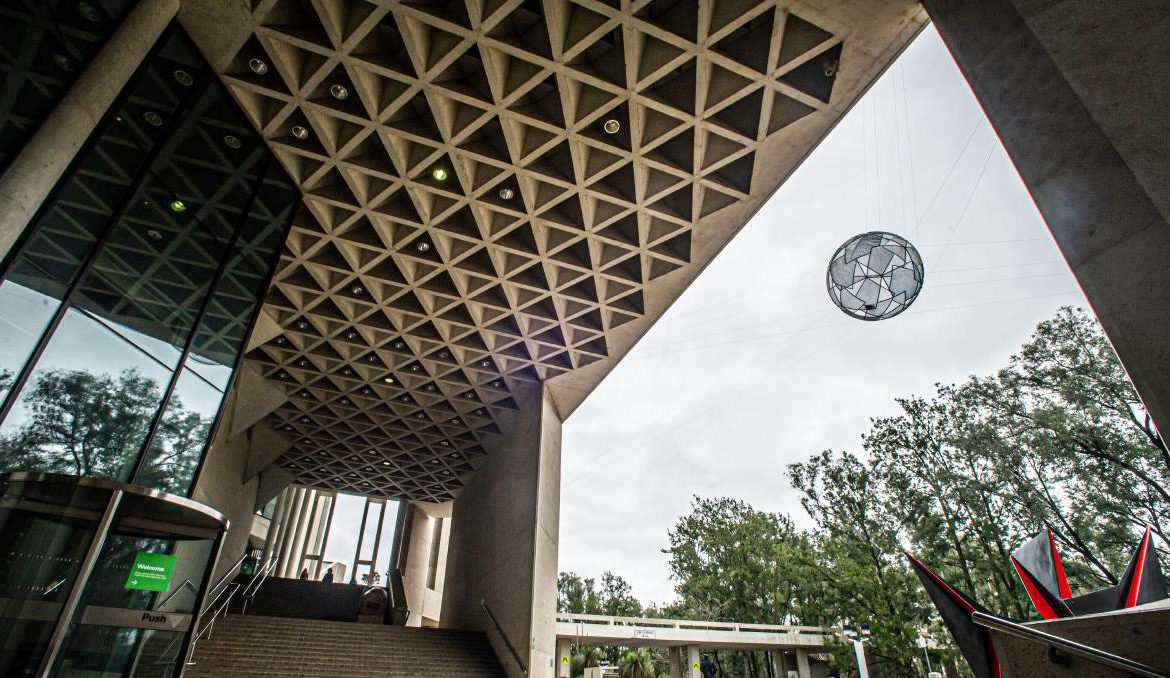news, latest-news, national gallery
The National Gallery of Australia is set to spend $20 million over the next two years to overhaul its lights and electrical systems, with every one of the ageing halogen globes to be replaced with LEDs. Announced as part of the government’s mid-year budget update, the funds are the latest in a series of capital works projects for the gallery. Gallery director Nick Mitzevich said the replacement wasn’t as simple as paying for new bulbs, as it required significant work to replace electrical wiring and infrastructure at the end of its life. The 40-year-old gallery building needs more work to replace vital infrastructure, with $25 million already allocated for replacing roofing, glazing, and mechanical objects like lifts, escalators and painting hoists. “This is a massive building and for the first time we’re replacing key infrastructure because of end-of-life reasons,” Mr Mitzevich said. He emphasised the $20 million for lighting and electricals would include significant work both inside and outside across the three-hectare site, and would increase safety, particularly outside. “The new LED lighting will enable a longer operating life and significantly lower operating costs, as well as emitting minimal amounts of UV light, avoiding colour degradation damage to valuable artworks,” Arts Minister Paul Fletcher said. “This additional government funding demonstrates our commitment to our national collecting institutions and our support for showcasing visual arts.” Mr Mitzevich said the gallery wasn’t going for “whizz-bang” upgrades, but replacing infrastructure that badly needed it. He said there would be further work to do in the coming years, including in hydraulics, electrical work, airconditioning and fire safety. Old Parliament House has also been a winner out of the budget update, getting $1.4 million from the government to make up for a drop in revenue due to the pandemic.
/images/transform/v1/crop/frm/fdcx/doc7cmwdrznluu1b23i53ks.jpg/r0_125_4256_2530_w1200_h678_fmax.jpg
The National Gallery of Australia is set to spend $20 million over the next two years to overhaul its lights and electrical systems, with every one of the ageing halogen globes to be replaced with LEDs.
Announced as part of the government’s mid-year budget update, the funds are the latest in a series of capital works projects for the gallery.
Gallery director Nick Mitzevich said the replacement wasn’t as simple as paying for new bulbs, as it required significant work to replace electrical wiring and infrastructure at the end of its life.
The 40-year-old gallery building needs more work to replace vital infrastructure, with $25 million already allocated for replacing roofing, glazing, and mechanical objects like lifts, escalators and painting hoists.
“This is a massive building and for the first time we’re replacing key infrastructure because of end-of-life reasons,” Mr Mitzevich said.
He emphasised the $20 million for lighting and electricals would include significant work both inside and outside across the three-hectare site, and would increase safety, particularly outside.
“The new LED lighting will enable a longer operating life and significantly lower operating costs, as well as emitting minimal amounts of UV light, avoiding colour degradation damage to valuable artworks,” Arts Minister Paul Fletcher said.
“This additional government funding demonstrates our commitment to our national collecting institutions and our support for showcasing visual arts.”
National Gallery of Australia director Nick Mitzevich. Picture: Elesa Kurtz
Mr Mitzevich said the gallery wasn’t going for “whizz-bang” upgrades, but replacing infrastructure that badly needed it. He said there would be further work to do in the coming years, including in hydraulics, electrical work, airconditioning and fire safety.
Old Parliament House has also been a winner out of the budget update, getting $1.4 million from the government to make up for a drop in revenue due to the pandemic.







